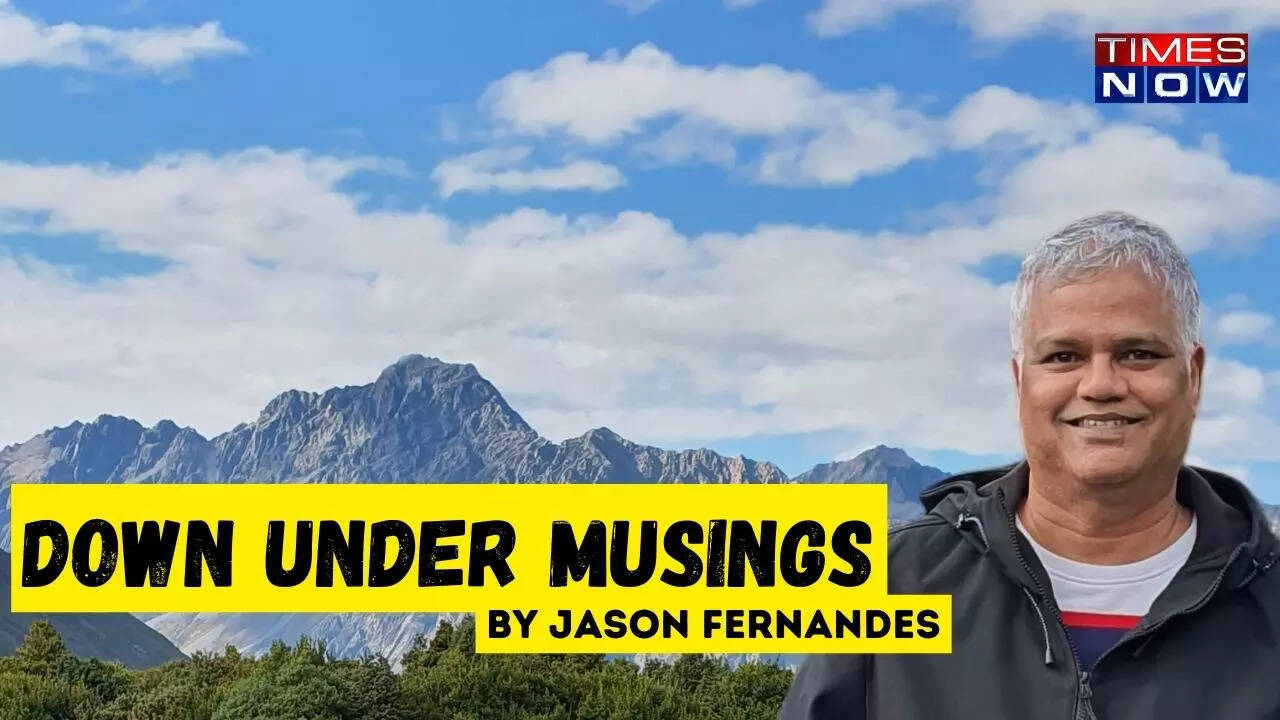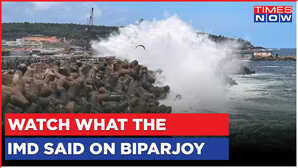Greetings And Salutations or Like we Say Here in New Zealand, Kia Ora
NZ is world renowned for our dairy, beef, lamb, and wool. Although our sheep population has dropped to its lowest-ever number, we still have over 25million sheep in NZ, so they outnumber humans 5:1 at the present time. The Cluta district in NZ has an unbelievable ratio of 82.5 sheep per person as of 2022.

Updated Jun 14, 2023 | 12:22 PM IST

Down under musings
I am Jason Fernandes, an India-born Kiwi and if you fancy a quirky, irreverent, and sometimes satirical take on the world around us, welcome to the Down Under Musings Blog. If you fancy using the acronym DUMB, be my guest.
I thought it might be apt to begin with a bit about my homeland because that might at times, help with perspective. You may or may not have been to New Zealand (NuZillind to those of us with a strong Kiwi accent). If you are yet to visit us, I invite you on a Tiki Tour; if you have spent time here in Middle Earth let me rekindle those happy memories.
Going back to the time of the Pangea family meltdown and the ensuing Continental Drift, little Zealandia was kicked far away from every other landmass and that explains our most unique flora and fauna.
We are famous for our native Rimu and Kauri timber and the Manuka tree, the nectar of which yields the unique Manuka honey.
NZ is world renowned for our dairy, beef, lamb, and wool. Although our sheep population has dropped to its lowest-ever number, we still have over 25million sheep in NZ, so they outnumber humans 5:1 at the present time. The Cluta district in NZ has an unbelievable ratio of 82.5 sheep per person as of 2022.
Fun fact: NZ is truly a land of milk and honey, and all that milk means excellent cheese, chocolate, and the highest per capita consumption of ice cream in the world.
We were home to the largest ever eagle to have existed - the Haast Eagle, weighing in at 15 Kgs. The Haast eagle preyed on the Moa bird which weighed up to 230 kgs.
Then the Maori arrived and hunted the Moa to extinction and with no prey to feed on, it was the end of the line for the Haast Eagle.
The tuatara (meaning “peak on the back” in Maori), a reptile endemic to New Zealand is from the order Rhynchocephalia dating back to the Triassic Age 250 million years ago. NZ’s Giant Weta (weta means the “God of ugly things” in Maori) is one of the largest insects in the world and easily outweighs a mouse.
Our native birds: With no land predators, our birdlife thrived and Captain James Cook on his arrival here in the 1770’s noted that the birdsong was deafening. Our most famous bird is the one we name ourselves after – the Kiwi. The Kiwi is a flightless, nocturnal bird that is under threat from introduced predators like stoats, cats, and dogs, as are our other bird species. The Kaka is a large parrot. The Tui is our iconic songbird. The Fantail (Piwakawaka) is bird you are most likely to spot in NZ. One is more likely to hear than to see the NZ Parakeet (Kakariki meaning “small parrot”) in its natural habitat.
Next, we go traipsing around the country but before that a little creation story about how the land came to be, according to Maori legend.
Those who have watched the much-loved Hollywood blockbuster Moana would be aware of the Demi-God Maui. In Polynesian tradition, Maui is a trickster hero with the ability to change the form, credited with stealing fire, capturing the Sun, seeking immortality, and descending into the underworld in search of his father. In time I will share some of the legends of Maui with you, but for now, let us get to how Maui was responsible for creating Aotearoa (the Land of the Long White Cloud) in New Zealand.
Maui’s brothers kept turning down his pleas to go fishing with them and that left him exasperated. So, one night he wove a fishing line out of flax, reciting an old karakia (prayer) as he wove, to give his fishing line strength. Then he attached a jawbone given to him by his ancestor Muriranawhenua to serve as the hook. The next morning armed with his fishing line Maui hid in the hull of his brothers’ canoe. The brothers noticed that the canoe was a bit heavier that morning and bickered amongst themselves because each thought the others were being lazy. Once his brothers dropped anchor, Maui revealed himself, much to their annoyance at him stowing away aboard the canoe. Maui tells his brothers to cast their lines while he prayed. Their catch was as abundant as Maui had promised. Next Maui announces his turn to fish but is met with laughter when he asks his brothers for bait. Maui punches his own nose causing it to bleed and proceeds to cover the hook with his blood for bait. He then stands at the front of the canoe, whirls his line as he recites his karakia and spins his line out to sea. The hook grabs onto a giant fish that Maui pulled to the surface. In time, Maui’s fish became the North Island and his canoe the South Island of New Zealand. As the story goes, Maui heads back home to tell his people of his catch, while his brothers keep watch over his fish. However, in his absence, his brothers begin to cut chunks out of the fish and that explains the topography of the North Island as we see it today. More on the legends of Maui in other stories to follow.
Fun fact: NZ is gradually getting infinitesimally slimmer and longer each year, thanks to tectonic plate movement. This renders us prone to earthquakes and has earned us the nickname “The Shaky Isles.” This activity though has gifted us with the spectacular Southern Alps that run diagonally across the South Island.
I am an Aucklander, so let us begin our journey here. We are a city of 1,652,0000 mostly happy souls from every corner of the planet, 192 nationalities give or take. Auckland is home to the largest Pasifica population in the world. Multi-cultural diversity brings varied cuisines to an Aucklander’s palate, and one is truly spoiled for choice.
53 volcanoes spread across most of Auckland make up the Auckland Volcanic Field and as these volcanoes are not extinct a future eruption with devastating consequences is a distinct possibility. Auckland has a liberal sprinkling of parks and reserves and bushwalks are a much-loved summer activity. We will set off from Auckland and travel through the North Island before we head off to the spectacular South Island.
Our major festivals.
Matariki (the cluster of stars also known as the Pleiades) rises in mid-winter and marks the beginning of the New Year in Maori tradition. Matariki is an abbreviation of Nga Mata O Te Ariki (The eyes of the God Tawhirimatea). As the legend goes, Tawhirimatea who is the God of the Wind, was so angry when his siblings separated their parents – Ranginui the Sky Father and Papatuanuku the Earth Mother, that he tore out his eyes and threw them into the heavens. At Matariki, the spirits of the dead are released to become stars.
Christmas falls in Summer, so there is no “White Christmas” in NZ. The lead up to Christmas features “Santa Parades” across cities and suburbs and Christmas in the Park free concerts for the public to attend.
Aucklanders of all ethnicities like to dress up in traditional Indian wear to celebrate Diwali across several venues over 3 weeks. Holi is the lesser celebrated Indian festival.
End of Article
Videos





07:41
IMD Briefing On Cyclone Biparjoy | Gujarat & Mumbai On High Alert | Landfall Expected In 24 Hours

04:31
OnePlus 11R, Samsung Galaxy A54, Vivo V27 Pro: Best Smartphones Under Rs 40,000 | Gadget Times

03:50
Realme 11 Pro | Unboxing & First Impression | Gadget Times

05:00
Apple Vision Pro | Here’s everything you need to know | Features, Price, Release Date & More

11:44
Apple's WWDC Event|| Everything You Need To Know | Gadget Times













